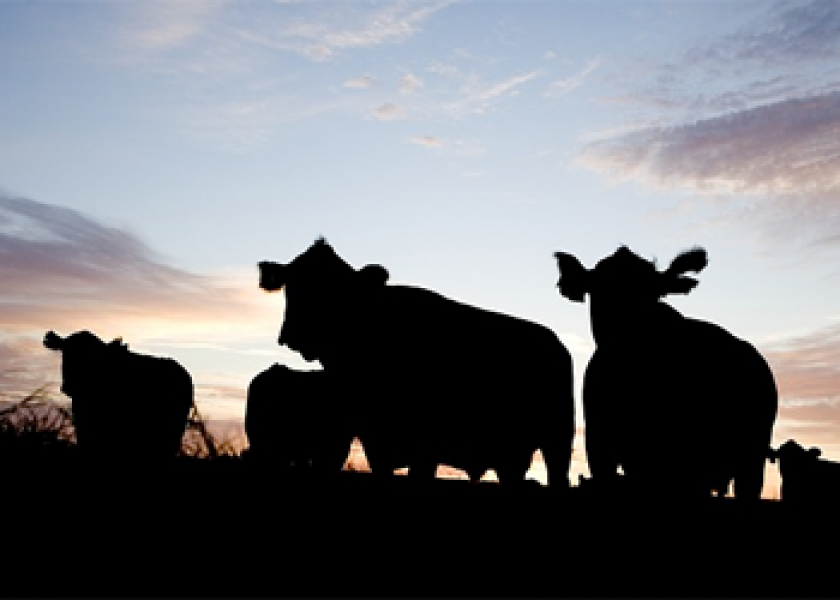Want More Calves Born in Daylight? Feed The Cows at Night

Feeding expectant beef cows at sunset or later results in more calves being born in daylight. That’s a benefit anytime of the year and especially during spring calving season when weather conditions are often harsh.
“Calving during daylight means calves are born during times of warmer temperatures, cows calving are easier to find and provide assistance to if needed and accordingly, more calves saved and alive,” reports Mark Johnson, Oklahoma State University Extension beef cattle breeding specialist, in an online bulletin.
The concept of nighttime feeding was introduced by a Manitoba rancher, Gus Konefal, in the 1970s. He found that 80% of his cows calved between 7 a.m. and 7 p.m. when they were fed later in the day. Konefal’s method included two feedings per 24-hour period, with the first feeding between 11:00 a.m. and noon and a second feeding between 9:30 and 10:00 p.m.1
Research at Iowa State University found similar results, according to Johnson. He reports that in one of the largest trials conducted, involving 1331 cows on 15 Iowa farms, cows were fed once daily at dusk. The result: 85% of the calves in those herds were born from 6:00 a.m. to 6 p.m.
Scientists haven’t confirmed why the nighttime feeding practice works, but the predominant theory is that it contributes to a hormonal effect that puts pressure on the cow’s rumen.
Adele Harty, a former South Dakota State University Extension cow/calf field specialist, offers some pointers to help make the Konefal method more successful:
• Research indicates that for this method to be most effective, it should be started one month prior to calving, but shorter duration before the start of calving will still have some effect.
• Iowa State advises staying as close to the same feeding schedule and feed amount as possible each day. Deviating more than 15 minutes or providing too much feed will yield less desirable results.
• Maintain regular night checks. Konefal calving may simply mean that there will be less work to be done between checks due to fewer calves born during the night.
• It works best in a drylot situation where all feed is provided. Desired effects in a grazing situation may not be seen unless supplemental hay or timing of grazing can be regulated.
• Weather can play a role in effectiveness. Before or during storms, cattle may not come to the bunk to eat and may be more likely to calve at night.
• Additional research indicates that a first-calf heifer that calves during the day will tend to calve during the day the remainder of her productive years.
More information on the practice is available here: https://www.youtube.com/watch?v=0AOOSfH4Q_o
Reference
1Konefal, G. 1980. Daytime Calving – the Konefal Method. Ninth Annual Cornbelt Cow-Calf Conference, Ottumwa, IA.







